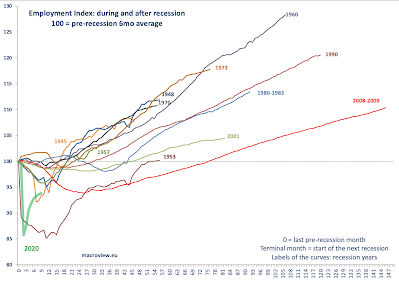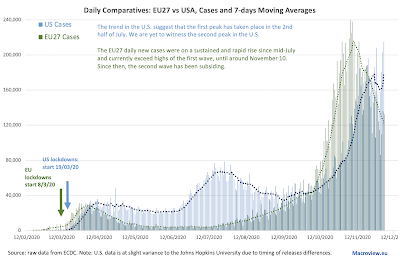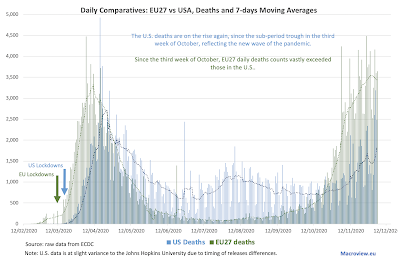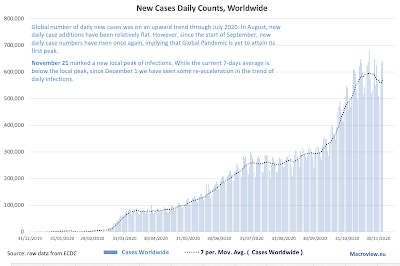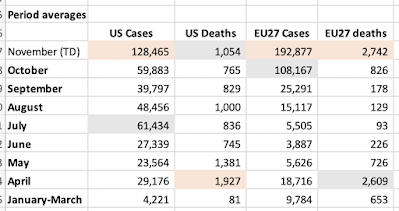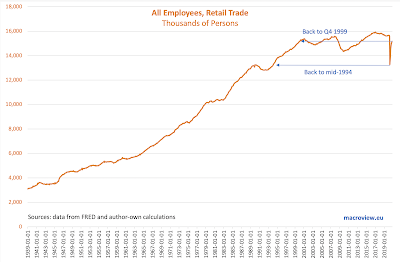Even with two vaccines now in the Emergency Authorization, we are many months away from reaching herd immunity levels, and worse, it is not entirely clear that we actually can reach that point at all. McKinsey research on Covid19 vaccines currently either authorized or close to authorization is dire (see https://www.mckinsey.com/industries/healthcare-systems-and-services/our-insights/when-will-the-covid-19-pandemic-end).
In basic terms, accounting for current immunity levels (effectively - infections-induced immunity) and assumed vaccines 95% effectiveness rate, but varying the assumed durability of the immunity gained from the vaccines, the U.S. will require 58-85% rate of vaccinations to reach herd immunity frontier (minimum level of immunity). One of the drivers for such high threshold for vaccinations is that, currently, no vaccine available is indicated for children.
While 58% threshold is hard, but feasible, 85% threshold is impossible, given the U.S. population heterogeneity in terms of attitude to vaccinations. American data on anti-vaccination advocates varies, but some recent indicators suggest that 23-25 percent of Americans are not willing to undertake Covid19 vaccinations (https://www.bostonglobe.com/2020/05/07/opinion/23-percent-say-they-wont-get-covid-19-vaccine/), and over time, the trend to avoid vaccinations has been rising prior to Covid19 pandemic (https://www.usnews.com/news/healthiest-communities/articles/2020-01-14/survey-fewer-people-now-support-vaccinating-their-kids-than-in-2001). A recent online survey of more than 2,000 U.S. adults, conducted by The Harris Poll found that 45 percent of Americans say something has caused them to doubt vaccine safety (https://www.infectioncontroltoday.com/view/45-percent-surveyed-american-adults-doubt-vaccine-safety).
Good luck getting far on the herd immunity curve with this crowd.
Note: McKinsey assumes 95% efficacy of the vaccines. Pfizer-BioNTech vaccine efficacy of 95% estimate is based on small sample trials and is shown to be potentially slightly lower (94%) for those in the age group of over 65. (see
https://www.pfizer.com/news/press-release/press-release-detail/pfizer-and-biontech-conclude-phase-3-study-covid-19-vaccine). Actual efficacy range reported in the preliminary data from the larger study is not 95%, but 90.3% to 97.6% (see
https://www.bmj.com/content/371/bmj.m4826). Thee administration of vaccines in all trials so far has been done in more tightly controlled environments than can be achieved in the case of mass distribution of these vaccines, and quality control in production and distribution of trial vaccines is probably much tighter too. Which suggests that the widely reported 95% figure is quite possibly an upper range of the efficacy estimates for the real world deployment. Using McKinsey's model, assuming 92% efficacy figure instead of 95%, the required rate of the U.S. population coverage of the vaccine to achieve minimum bound of herd immunity rises to 60%-88% range.
Furthermore, assuming natural immunity levels of 10 percent (McKinsey use estimates of 0% to 25%) implies vaccine coverage requirement of around 72-75 percent of population.
Yeah, I know, it gets tougher... and so far, there are no tangible plans for
any at scale distribution of the vaccines to the general population in the U.S. Not even my giant insurance provider can tell when and how this will be made available. Good luck if you are looking for one having no insurance, or having only basic catastrophic cover.











